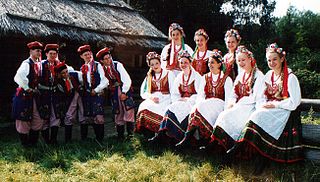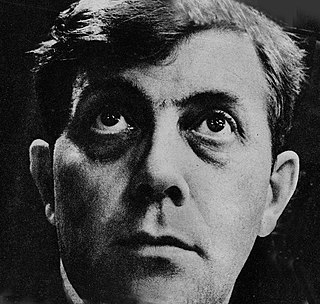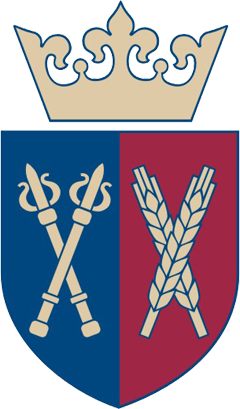
Kraków, also seen spelled Cracow or absent Polish diacritics as Krakow, is the second-largest and one of the oldest cities in Poland. Situated on the Vistula River in Lesser Poland Voivodeship, the city dates back to the seventh century. Kraków was the official capital of Poland until 1596, and has traditionally been one of the leading centres of Polish academic, economic, cultural and artistic life. Cited as one of Europe's most beautiful cities, its Old Town with Wawel Royal Castle was declared a UNESCO World Heritage Site in 1978, one of the world's first sites granted the status.

Lesser Poland Voivodeship or Lesser Poland Province, also known as Małopolska, is a voivodeship (province) in southern Poland. It has an area of 15,108 square kilometres (5,833 sq mi), and a population of 3,404,863 (2019).

The Jagiellonian University is a public research university in Kraków, Poland. Founded in 1364 by King Casimir III the Great, it is the oldest university in Poland and the 13th oldest university in continuous operation in the world. It is regarded as Poland's most prestigious academic institution. The university has been viewed as a vanguard of Polish culture as well as a significant contributor to the intellectual heritage of Europe.

Jan Alojzy Matejko was a Polish painter, a leading 19th-century exponent of history painting, known for depicting nodal events from Polish history. His works include large scale oil paintings such as Stańczyk (1862), Rejtan (1866), Union of Lublin (1869), Astronomer Copernicus, or Conversations with God (1873), or Battle of Grunwald (1878). He was the author of numerous portraits, a gallery of Polish monarchs in book form, and murals in St. Mary's Basilica, Kraków. He is considered by many as the most celebrated Polish painter, and sometimes as the "national painter" of Poland.

During World War II in Poland, education often took place underground. Secretly conducted education prepared scholars and workers for the postwar reconstruction of Poland and countered German and Soviet threats to eradicate Polish culture.

AGH University of Krakow, is a public university in Kraków, Poland. Founded in 1913, its inauguration took place in 1919. The university focuses on innovative technologies, its research profile also includes engineering disciplines, exact sciences, Earth sciences, and social sciences.

Sonderaktion Krakau was a German operation against professors and academics of the Jagiellonian University and other universities in German-occupied Kraków, Poland, at the beginning of World War II. It was carried out as part of the much broader action plan, the Intelligenzaktion, to eradicate the Polish intellectual elite, especially in those centers that were intended by the Germans to become culturally German.

Kraków is considered by many to be the cultural capital of Poland. It was named the European Capital of Culture by the European Union for the year 2000. The city has some of the best museums in the country and several famous theaters. It became the residence of two Polish Nobel laureates in literature: Wisława Szymborska and Czesław Miłosz, while a third Nobel laureate, the Yugoslav writer Ivo Andrić also lived and studied in Krakow. It is also home to one of the world's oldest universities, the Jagiellonian University of Kraków, and Jan Matejko Academy of Fine Arts, the oldest Polish fine art academy, established in 1818 and granted full autonomy in 1873.

The Renaissance in Poland lasted from the late 15th to the late 16th century and is widely considered to have been the Golden Age of Polish culture. Ruled by the Jagiellonian dynasty, the Crown of the Kingdom of Poland actively participated in the broad European Renaissance. The multinational Polish state experienced a period of cultural growth thanks in part to a century without major wars, aside from conflicts in the sparsely-populated eastern and southern borderlands. The Reformation spread peacefully throughout the country, and living conditions improved, cities grew, and exports of agricultural products enriched the population, especially the nobility (szlachta), who gained dominance in the new political system of Golden Liberty.

Independent Students' Association is a Polish student society, created in October 1980, in the aftermath of the Gdańsk Agreement and the anti-government strike actions. It was a student arm, or suborganization, of Solidarity, and together with it, as well as other similar organizations, was banned after the implementation of martial law in Poland. Some activists were arrested, and others organized an underground NZS. After the fall of Communism in 1989, the organization was recreated, and its focus was changed from political to cultural, although it still stands by its origins, as seen by Polish students’ support for the Orange Revolution in Ukraine. It now is the largest independent student organization in Poland, with 90 chapters at Polish universities and a total of 20,000 members.

The Jan Matejko Academy of Fine Arts in Kraków, is a public institution of higher education located in the centre of Kraków, Poland. It is the oldest Polish fine art academy, established in 1818 and granted full autonomy in 1873.

The Collegium Maius located in Kraków Old Town, Poland, is the Jagiellonian University's oldest building, dating back to the 14th century. It stands at the corner of ulica Jagiellońska and ulica Świętej Anny near the Main Square of the historic city centre. Collegium Maius is the location of the Jagiellonian University Museum, a registered museum established on the initiative of Prof. Karol Estreicher after meticulous restorations which lasted from 1949 through 1964, bringing the edifice back to its original look from before 1840.

Wiktor Zin was a Polish architect, graphic artist, professor, architectural preservationist, cultural activist, and promoter of Polish history and culture.

The University of National Education Comision, is named after the Commission of National Education created by King Stanisław August Poniatowski. It is a public university located in Kraków, Poland. It was founded soon after the conclusion of World War II, on May 11, 1946, originally as the National Higher College of Teacher Training. Its aim is the training of highly qualified teaching staff for the Polish educational system.

The Agricultural University of Kraków, located in Kraków, Poland, became a university by decree of the Council of Ministers as of 28 September 1972. Formerly, it was known as the Higher College of Agriculture, as well as other names, since its establishment in 1890. The university is named after the prominent Polish constitutional reformer and educationalist Hugo Kołłątaj.

AST National Academy of Theatre Arts, is a drama school based in Kraków and Wrocław, Poland. It was founded in 1946 by actor Juliusz Osterwa, who took the initial steps leading to the establishment of the Academy through the amalgamation of three local studios; Stary Teatr, the Słowacki Theatre, and Iwo Gall's Dramatic Studio.
Jagiellonian University Medical College is the oldest medical school in Poland. The Jagiellonian University's Faculties of Medicine and Pharmacy are acclaimed as one of the largest medical academies in Poland. The school was established by King Casimir III of Poland in 1364.
















